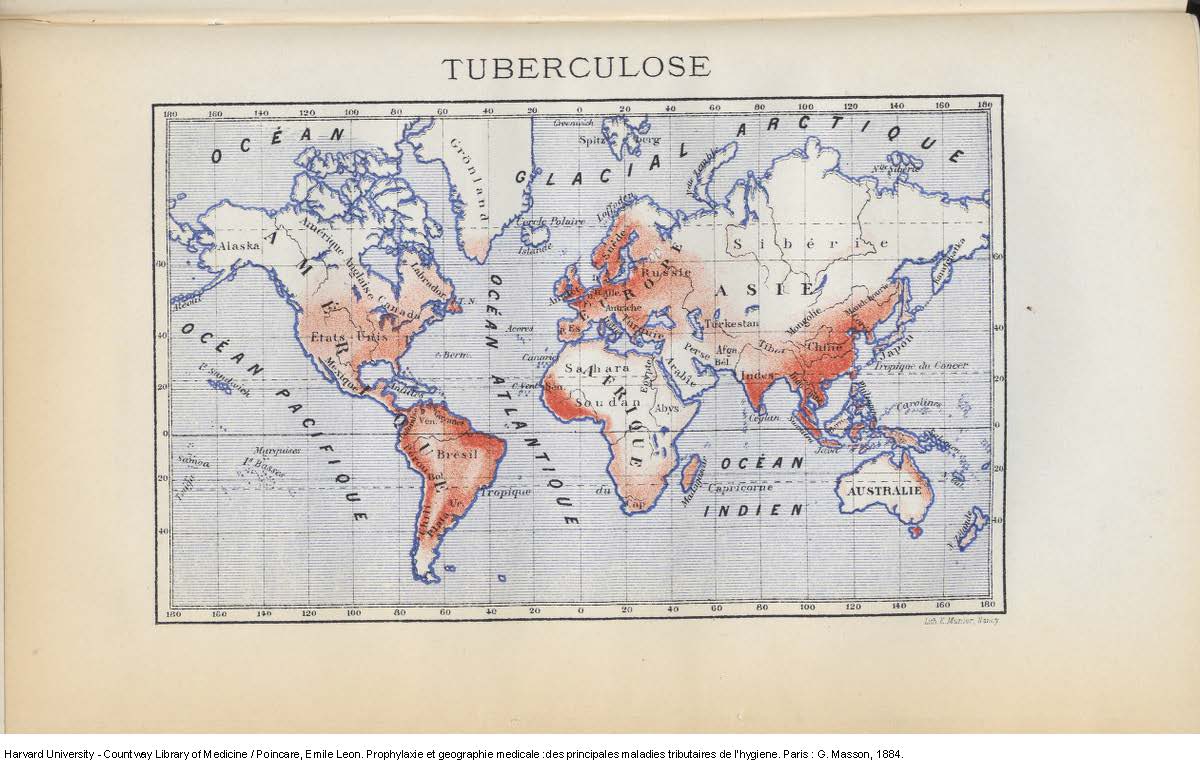
The Center for the History of Medicine announces the re-opening of the Contagion exhibit. Harvard Library created the exhibit in 2008 as part of the Open Collections Program (OCP). The original site included:
- digitized items curated from across the Harvard Library system,
- historical notes on contagious diseases throughout history,
- biographies of notable people who contributed to contagious disease research and treatment,
- and topical bibliographies of digitized primary and secondary sources.
The Open Collections Program sites were decommissioned in 2018. Shortly afterward, Harvard Library launched CURIOSity, a new digital exhibit platform. At that point, staff moved the digitized Contagion items to CURIOSity. The narrative content and exhibit structure was preserved via the Internet Archive.
In Spring 2020, staff from the Center and Harvard Library Imaging Services rebuilt the exhibit in CURIOSity. We migrated all original narrative and bibliographic content from the archived site. Our goal was to improve accessibility and restore the exhibit's original structure. We made only minor edits and updates, to make the exhibit more quickly available. More work is still necessary to make the exhibit more inclusive and accessible. For more information on the migration, please visit the Exhibit Migration 2020 page.
After migration, the Contagion exhibit now includes:
- Historical notes on contagious disease episodes throughout history (1494-1948). See:
- Spanish Influenza in North America, 1918-1919. The 1918 flu pandemic killed 50 to 100 million people worldwide. Current public discourse has often referenced the disease in comparison with COVID-19.
- The Boston Smallpox Epidemic, 1721. Immigrants brought the disease to America from Europe in the 16th century. The disease killed large numbers of Indigenous people throughout the continent. In Boston in 1721, smallpox killed 844 residents (more than 3/4 of total deaths that year).
- Significant Diseases Throughout History. This page lists all feature pages on diseases in the exhibit.
- Topical pages describing concepts related to contagious disease. See:
- Germ Theory. The theory that microorganisms cause disease. This theory was popularized between 1850 and 1920.
- Humoral Theory. The theory that health depends on a balance of the four humors (black bile, yellow or red bile, blood, and phlegm). This theory was popular for centuries before germ theory replaced it.
- Topics and Themes. This page lists all topical pages in the exhibit.
- Biographical pages on prominent contagious disease researchers. See:
- Florence Nightingale, 1820-1910. Nightingale was a British military nurse who contributed to sanitation reform. She was skeptical of germ theory, and valued hygiene as the best method of disease prevention.
- Benjamin Waterhouse, 1754-1846. Waterhouse was at the forefront of vaccination practice in the United States. Yet, his success also reveals issues of informed consent. He experimented on members of his own household (both family and servants).
- Notable People. This page lists all topical pages in the exhibit.
- A timeline of selected events in contagious disease history, 1494-1948
- Overviews of the collections used in the creation of the exhibit. These collections are from across Harvard Libraries. See:
- Archives and Manuscript Collections. This page links to descriptions of the collections in the exhibit.
- Image Collections. This page describes the image collections used in the exhibit.
For more information on the Contagion exhibit, please email Amber LaFountain, the Metadata Archivist. For more information on the collections, please email Public Services.